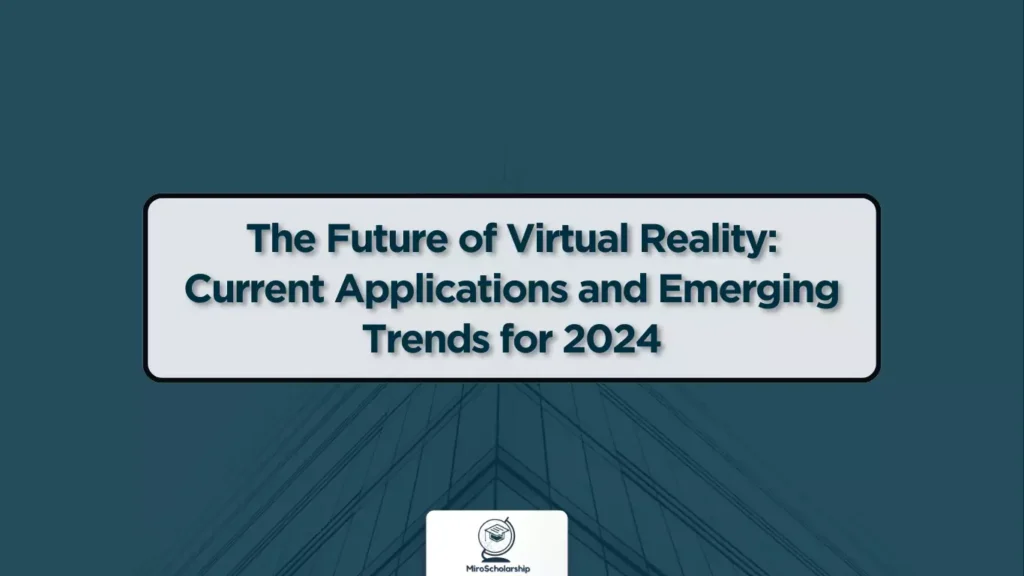Introduction
Virtual Reality (VR) has evolved from a niche technology for gaming enthusiasts to a versatile tool impacting education, healthcare, real estate, and beyond. This article examines VR’s current applications and what lies ahead.
What is Virtual Reality?
VR creates immersive, computer-generated environments that users can interact with via headsets like Oculus Rift or HTC Vive. It provides a sense of presence in a virtual space, enhancing user experiences. The technology is driven by several components, including 3D audio, hand controllers, and motion tracking, which together offer a fully immersive experience.
Key Applications of Virtual Reality
-
Education and Training
- Impact: VR provides immersive learning environments for students and professionals, allowing them to experience real-world scenarios in a controlled setting. This technology is particularly useful for fields that require hands-on practice and complex skills.
- Example: Medical students use VR for surgical simulations, gaining experience without the risk of harming patients. Platforms like Google Expeditions offer virtual field trips, enabling students to explore places like the Great Wall of China or the surface of Mars.
-
Healthcare
- Impact: VR aids in treating anxiety disorders, PTSD, and chronic pain through exposure therapy. It also serves as a tool for physical rehabilitation and pain management by distracting patients during procedures.
- Example: Cedars-Sinai uses VR to alleviate pain and anxiety in patients during treatment. VR applications like Virtually Better provide therapy for phobias, allowing patients to confront fears in a safe environment.
-
Real Estate
- Impact: VR enables virtual property tours, giving potential buyers a realistic view of properties without the need for physical visits. This technology enhances the buying experience and speeds up decision-making.
- Example: Real estate agencies like Matterport offer 3D virtual walkthroughs of homes, allowing buyers to explore properties in detail. VR headsets can provide an immersive viewing experience, making it easier for buyers to visualize their future home.
-
Gaming and Entertainment
- Impact: VR provides interactive and engaging gaming experiences, making players feel like they are part of the game. It also opens new possibilities for immersive storytelling in movies and virtual concerts.
- Example: Games like “Beat Saber” and “Half-Life: Alyx” set new standards for VR gaming experiences. VR concerts and events, such as those hosted by Wave, offer audiences a chance to attend live performances in a virtual setting.
-
Retail and E-Commerce
- Impact: VR enhances the online shopping experience by allowing customers to try products virtually before purchasing. This can reduce return rates and increase customer satisfaction.
- Example: Retailers like IKEA use VR to let customers design and visualize their rooms with IKEA furniture, providing a realistic preview of how products will look in their space.
-
Architecture and Design
- Impact: VR allows architects and designers to create and explore virtual models of their projects, making it easier to spot design flaws and make improvements before construction begins.
- Example: Tools like Autodesk Revit and Enscape offer VR integration for real-time visualization of architectural designs, helping clients and stakeholders understand the project’s vision.
Future Trends in Virtual Reality
- Social VR Platforms: Platforms like Facebook Horizon aim to create virtual social spaces for people to interact. These platforms could revolutionize social networking by providing more engaging and immersive ways to connect with others.
- VR in Professional Training: More industries will use VR for safe, cost-effective employee training simulations. This includes sectors like aviation, manufacturing, and emergency services, where practical experience is crucial.
- Haptic Feedback: Future VR devices will incorporate more advanced haptics to simulate physical touch. This will enhance the sense of realism in VR experiences, making interactions more tangible.
- VR and Augmented Reality (AR) Integration: The combination of VR and AR, known as mixed reality, will create new possibilities for immersive experiences. This technology can blend virtual and real-world elements, offering innovative applications in various fields.
- 5G and VR: The rollout of 5G networks will enhance VR experiences by reducing latency and improving data transfer speeds. This will enable more seamless and high-quality VR applications, especially for mobile VR platforms.
Challenges in Virtual Reality
- Cost of Equipment: High-quality VR headsets and accessories can be expensive, limiting accessibility for some users. However, prices are gradually decreasing as the technology becomes more widespread.
- Motion Sickness: Some users experience motion sickness while using VR, which can hinder the adoption of the technology. Developers are working on improving the comfort and reducing the latency of VR experiences to address this issue.
- Content Development: Creating high-quality VR content requires significant resources and expertise. There is a need for more accessible tools and platforms to enable content creators to produce engaging VR experiences.
- Privacy and Security: As VR collects vast amounts of data, including biometric information, ensuring privacy and security is a critical concern. Developers must implement robust measures to protect user data.
Conclusion
VR is expanding beyond entertainment, finding practical applications in various sectors. As technology advances, VR’s impact will only grow, providing innovative solutions for education, healthcare, and communication. Staying informed about these trends and overcoming the associated challenges will be crucial for maximizing the potential of VR.
Read More: Top Cloud Computing Trends and Challenges for 2024

